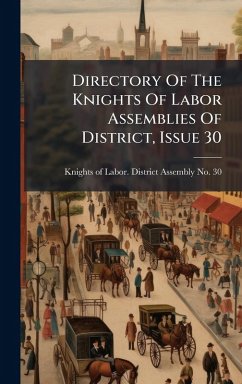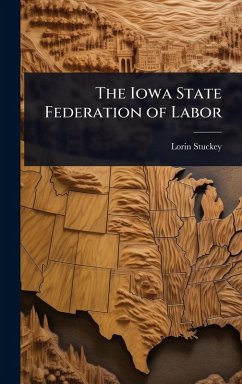
Thirty Years of Labor, 1859-1889; in Which the History of the Attempts to Form Organizations of Workingmen for the Discussion of Political, Social, and Economic Questions is Traced. The National Labor Union of 1866, the Industrial Brotherhood of 1874, ...
Versandkostenfrei!
Versandfertig in über 4 Wochen
41,99 €
inkl. MwSt.
Weitere Ausgaben:

PAYBACK Punkte
21 °P sammeln!
"Thirty Years of Labor, 1859-1889" offers a detailed account of the efforts to create workingmen's organizations dedicated to political, social, and economic reform. Penned by Terence Vincent Powderly, a prominent figure in the labor movement, this historical record traces the evolution of labor activism in the United States. The book examines key organizations, including the National Labor Union of 1866, the Industrial Brotherhood of 1874, and the rise of the Knights of Labor, providing valuable insights into the challenges and triumphs of organized labor during a transformative era. Powderly...
"Thirty Years of Labor, 1859-1889" offers a detailed account of the efforts to create workingmen's organizations dedicated to political, social, and economic reform. Penned by Terence Vincent Powderly, a prominent figure in the labor movement, this historical record traces the evolution of labor activism in the United States. The book examines key organizations, including the National Labor Union of 1866, the Industrial Brotherhood of 1874, and the rise of the Knights of Labor, providing valuable insights into the challenges and triumphs of organized labor during a transformative era. Powderly's firsthand perspective provides a rich narrative of the personalities, strategies, and ideologies that shaped the labor movement. This work remains essential reading for anyone seeking to understand the historical roots of contemporary labor issues and the ongoing struggle for workers' rights. This work has been selected by scholars as being culturally important, and is part of the knowledge base of civilization as we know it. This work was reproduced from the original artifact, and remains as true to the original work as possible. Therefore, you will see the original copyright references, library stamps (as most of these works have been housed in our most important libraries around the world), and other notations in the work. This work is in the public domain in the United States of America, and possibly other nations. Within the United States, you may freely copy and distribute this work, as no entity (individual or corporate) has a copyright on the body of the work. As a reproduction of a historical artifact, this work may contain missing or blurred pages, poor pictures, errant marks, etc. Scholars believe, and we concur, that this work is important enough to be preserved, reproduced, and made generally available to the public. We appreciate your support of the preservation process, and thank you for being an important part of keeping this knowledge alive and relevant.












